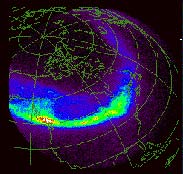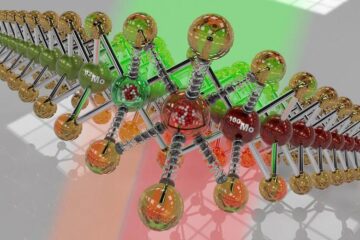Latest News

Magnetic ’slinky effect’ may power aurora
The spectacular aurora borealis displays that light up the northern nights could be powered by a gigantic “slinky” effect in Earth’s magnetic field lines, according to research performed at the University of Minnesota. Earth’s magnetic field resemble a slinky in that when “wiggled,” it undulates in waves that travel down the field lines at speeds up to 25 million miles per hour. These waves can pass energy to electrons, accelerating them along the magnetic field lines toward Earth. When the

Scientists explain formation of stone circles and other strange patterns in northern regions
Mysterious patterns arise through simple feedback mechanisms and self-organization
Perfect circles of stones cover the ground in parts of Alaska and the Norwegian islands of Spitsbergen. Elsewhere in the far north, stones form other striking patterns on the ground: polygons, stripes, islands, and labyrinths. No, pranksters are not at work in these remote areas, nor are aliens, elves, or any other outside forces moving the stones around. According to scientists who have studied the phe

Influences on quality of life in early old age
A golden early old age is within sight for many people, says new research funded by the Economic and Social Research Council, which demonstrates that the good life is much less influenced by your past – the job your father had, for instance – than by the present, when two of the most important influences are having choices about working or not working, and having friends in whom you can confide.
“Good quality of life in early old age is a realistic ambition for all”, says the research team,

Early mammals used pelvic bones to trot, study finds
Scientists studying the earliest mammals have been stumped for centuries about the function of two pelvic bones found in the fossil record that most mammals don’t have today. A study published in this week’s issue of the journal Science suggests those bones were involved in locomotion and helped the animals become more mobile, a find that could help researchers pinpoint a key moment in the evolution of mammals.
Biologists at Ohio University and Buffalo State College studied modern

Recycling of electronic circuit boards
GAIKER is a participant in a project at a multinational level which is financed by the European Union Competitive and Sustainable Growth Project. The project is to develop innovative technology which will have two aspects or stages: firstly the separation and recovery of components capable of being reused and, subsequently, the recycling of materials used in electronic printed circuit boards (from telephones, T.V.’s, and so on). The great quantity of small parts, different components, solder and oth

Kaixo, classifier of photoelectric cells
Currently there is great talk of renewable energies and, amongst these solar energy is highly important. In order to harness and utilise this form of energy there are many technologies available of which one is solar panels. These panels are made up of photoelectric cells (the 80-100 little square units in any one panel).
Photoelectric cells are classified according to the power they produce, given that total power production of any panel can be limited by just one photoelectric cell of lowe











